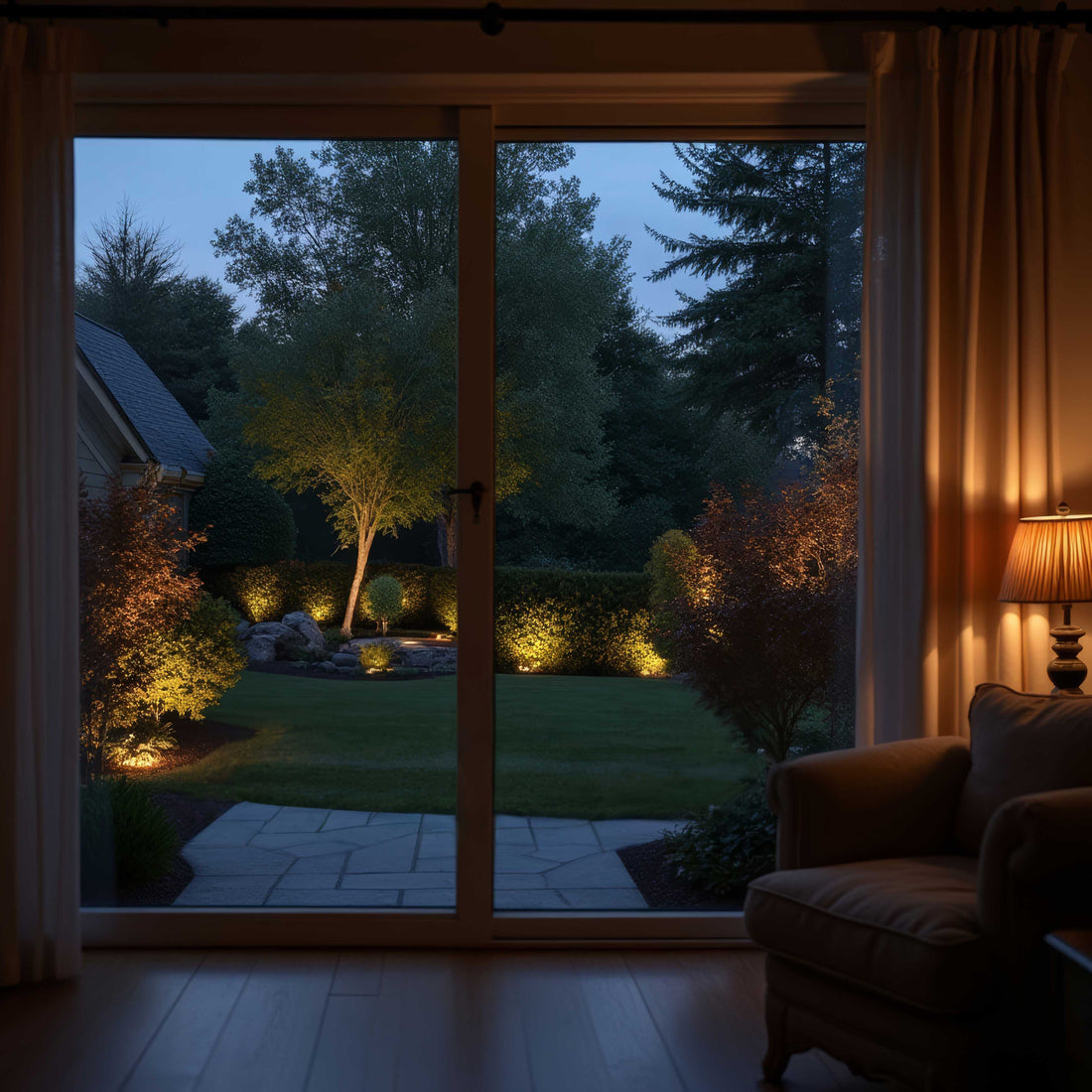
Creating Ambiance: Outdoor Lighting Ideas
Share
Outdoor Lighting: Enhancing Your Backyard
Outdoor lighting is an incredible way to enhance your backyard, making it a welcoming and vibrant space even after the sun sets. The right lighting can create different moods, highlight key features, and ensure safe navigation. Whether you're hosting a barbecue, enjoying a quiet evening, or simply showcasing your garden's beauty, lighting plays a crucial role.
Understanding the various types of outdoor lighting and how they can be used helps in creating the perfect ambiance. From ambient lighting for a warm and inviting feel to task lighting for specific activities like grilling or reading, the options are endless. Adding accent lighting can further enhance the look, drawing attention to focal points such as trees, sculptures, or water features.
In this article, we'll explore different outdoor lighting ideas that can transform your backyard into a stunning retreat. You’ll learn how to plan and place lights effectively while maintaining them for lasting performance. With these tips, you can create a backyard that is both functional and aesthetically pleasing, making it an enjoyable space all year round.
Different Types of Outdoor Lighting for Your Backyard
Ambient Lighting for Overall Atmosphere
Ambient lighting sets the overall mood of your backyard. This type of lighting provides general illumination, making the space feel warm and inviting. Soft lights placed strategically can create a cosy, relaxing atmosphere perfect for evening gatherings or quiet nights outdoors.
Common ambient lighting options include overhead fixtures like string lights, hanging lanterns, or even strategically placed wall lights. These lights cast a gentle glow over a large area, ensuring enough light to see and move around comfortably. The goal is to create an evenly lit space without harsh shadows or intense brightness.
Task Lighting for Specific Activities
Task lighting focuses on providing illumination for specific activities. Whether you're grilling, reading a book, or playing games, task lights ensure you have enough light to see clearly and perform tasks safely.
Examples of task lighting include spotlights for grilling areas, reading lamps near seating, and brighter lights for outdoor workspaces. These lights are typically more intense and focused than ambient lights, directing light exactly where it's needed. Proper task lighting makes activities more enjoyable and reduces the risk of accidents.
Accent Lighting for Highlighting Features
Accent lighting is ideal for highlighting specific features in your backyard. This type of lighting adds a touch of drama and draws attention to focal points like trees, sculptures, water features, or architectural details.
Using accent lighting creatively can transform ordinary elements into standout features. For instance, uplighting can create striking shadows on a tree or wall, while downlighting can highlight garden beds or pathways. Accent lights are usually smaller and more focused, offering a concentrated beam that enhances the visual appeal of your backyard.
Creative Outdoor Lighting Ideas
Using String Lights for a Magical Effect
String lights are a simple yet effective way to add a magical touch to your backyard. These lights can be draped over trees, along fences, or across patios to create a whimsical, fairy-tale atmosphere. The soft glow from string lights is perfect for setting a relaxed, inviting mood.
You can also use string lights to define different areas in your backyard. For instance, hang them around a seating area to create a cosy nook, or string them along walkways to guide guests. The possibilities are endless, and the result is always enchanting.
Installing Pathway Lights for Safe Navigation
Pathway lights are essential for ensuring safe navigation around your backyard, especially after dark. These lights help illuminate walkways, steps, and driveways, reducing the risk of trips and falls. Besides their practical benefits, they also add a charming aesthetic to your landscape.
There are many styles of pathway lights to choose from, including solar-powered, stake lights, and low-voltage options. Place them at regular intervals along paths to provide consistent lighting. This not only enhances safety but also adds structure and beauty to your garden.
Highlighting Trees and Shrubs with Uplighting
Uplighting trees and shrubs can create a dramatic and beautiful effect in your backyard. By placing lights at the base of trees and angling them upward, you accentuate the natural shapes and textures of the foliage. This creates stunning shadows and highlights that make your garden come alive at night.
For best results, use energy-efficient LED uplights that offer different colour temperatures. Warm white lights create a soft, natural look, while cooler hues can add a more modern feel. Experiment with different angles and distances to achieve the most visually striking effect.
Tips for Effective Outdoor Lighting Placement
How to Layer Different Types of Lighting
Layering different types of lighting is key to creating a balanced and visually appealing backyard. Start with ambient lighting to provide general illumination. Then, add task lighting in areas where you need focused light, like near grills or reading spots. Finally, use accent lighting to highlight specific features, such as a beautiful tree or a water fountain.
The trick is to blend these layers seamlessly. Each type of light serves a unique purpose, and together, they create a cohesive, well-lit space. Having multiple light sources also reduces harsh shadows and adds depth to your backyard.
Strategic Placement for Maximum Effect
Strategic placement of lights ensures you get the most out of your lighting setup. Position ambient lights overhead or use wall fixtures to spread light evenly. Place task lights where you need more visibility, like on steps or near cooking areas.
Accent lights should be placed at the base of trees or pointed at garden sculptures to draw attention. Avoid placing lights in a straight line, as this can look too rigid. Instead, stagger them to create a natural, flowing look. Think about how the light will interact with the surroundings, including plants and furniture.
Avoiding Common Lighting Placement Mistakes
Many people make common mistakes when placing outdoor lights. One mistake is using too many lights, which can make the backyard look cluttered and overly bright. Instead, focus on key areas and use lights to guide the eye.
Another mistake is placing lights too high or too low. Lights that are too high may not illuminate the ground properly, and lights that are too low can create tripping hazards. Proper height placement ensures effective lighting and safety. Also, avoid shining lights directly into people's eyes, which can be uncomfortable and blinding.
Maintaining and Upgrading Your Outdoor Lighting
Regular Maintenance Tips for Long-Lasting Lights
Regular maintenance keeps your outdoor lights performing well. Inspect your lights every few weeks to ensure they are clean and working correctly. Dust and debris can collect on fixtures, reducing their brightness. Wipe them down with a soft cloth and mild detergent to keep them clean.
Check for any loose connections or damaged wires. Tighten any loose screws and replace broken parts promptly. Regular maintenance prevents small issues from turning into bigger problems and extends the life of your lighting system.
Upgrading to Energy-Efficient Options
Upgrading to energy-efficient lighting options is a smart move. LED lights are a great choice because they use less electricity and have a longer lifespan compared to traditional bulbs. This means you save money on your energy bill and reduce the frequency of replacements.
Consider installing solar-powered lights in sunny areas of your yard. These lights charge during the day and provide illumination at night without using electricity. Energy-efficient upgrades not only reduce costs but also have a positive impact on the environment.
Seasonal Adjustments and Enhancements
Your outdoor lighting should adapt with the seasons. In winter, shorter days and longer nights may require you to increase the duration your lights are on. Make sure lights are clear of snow and ice to ensure they work properly.
In spring and summer, you might want to add more lights to highlight blooming flowers or new garden features. Adjust the angles and brightness to match the season's needs. Seasonal adjustments and enhancements keep your backyard looking fresh and properly lit all year round.
Conclusion
Creating the perfect ambiance in your backyard with outdoor lighting transforms your space into a beautiful and functional area. By understanding and using different types of lighting—ambient, task, and accent—you can achieve the desired atmosphere. Creative lighting ideas, such as string lights, pathway lights, and uplighting, add charm and practicality.
Effective placement is also crucial. Layer your lights, position them strategically, and avoid common mistakes to enhance the overall look. Regular maintenance and upgrades to energy-efficient options ensure your lighting system lasts longer and performs better. Seasonal adjustments keep the lighting fresh and suitable for any time of year.
Ready to light up your backyard with premium-quality, weather-resistant LED landscape lighting? Visit Silhouette Lights today and discover the perfect solutions for your outdoor space!
